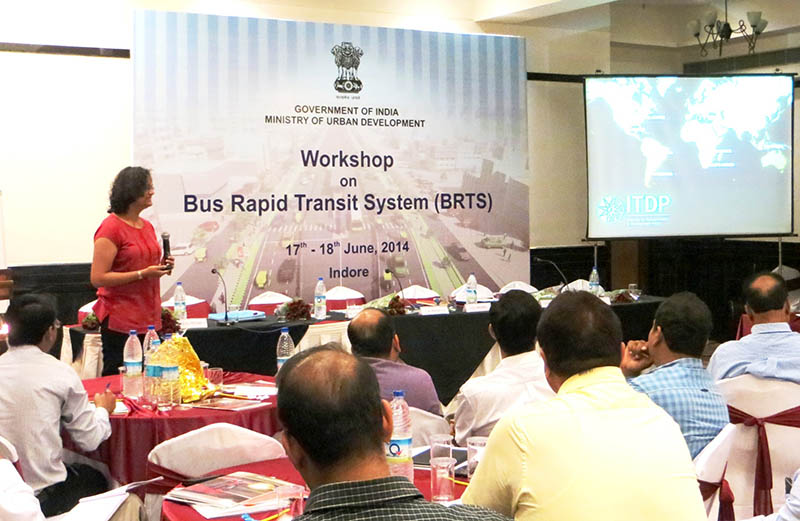
Over the next decade, many Indian cities will see the use of personal motor vehicles double unless action is taken to improve sustainable transport options. ITDP estimates that 10,000 km of rapid transit are required in the 100 largest Indian cities to ensure that most new trips can be accommodated in public transport rather than personal motor vehicles. Recognizing the urgent need to rapidly expand mass transit, senior officials from cities across the country met recently to increase awareness about BRT and the features of high quality BRT corridors.
The workshop, organized by the Indian Ministry of Urban Development (MOUD) in partnership with the Institute of Urban Transport (IUT) and ITDP, brought together more than seventy secretaries, commissioners, chief engineers, planners, and managers from public transport agencies from cities in all stages of the BRT planning process.

Sudhir Krishna, Secretary of MOUD, provided opening remarks, highlighting the benefits of BRT and reflecting the important role BRT will play in India’s urban development moving forward. He emphasized that BRT systems have the potential to be as elegant and comfortable as metros while offering greater flexibility. He also cited the low implementation costs as a key reason that cities should invest in BRT systems.
The workshop took place in Indore, India, home to the high quality but embattled iBus BRT. The Indore BRT system incorporates many best practice features but is currently struggling due to a decision by the High Court of the state of Madhya Pradesh to allow private cars to use the BRT lanes. An expert committee convened by the High Court has submitted an opinion reiterating the need to maintain the lanes as an exclusive corridor for BRT buses, and the High Court is expected to reconsider its earlier decision shortly.


Even the highest scoring cities identified a host of features they could introduce to improve their system further.
“Yesterday I was running BRT in Indore,” said Sandeep Soni, Joint Collector of Indore and CEO of AICTSL, “but now I know I need to improve.”
The workshop also created an opportunity for ITDP to gather feedback about the BRT Standard, its applicability in the Indian context, and changes required to make the document a more useful tool for Indian cities as they are planning their BRT systems. Readers are encouraged to submit their comments on the BRT Standard to india@itdp.org.
See Shreya Gadepalli’s presentation from the workshop, Bus Rapid Transit for Indian Cities.
